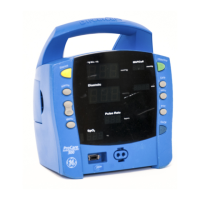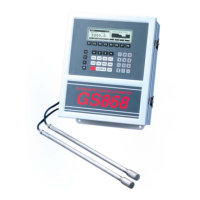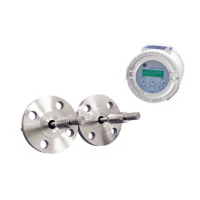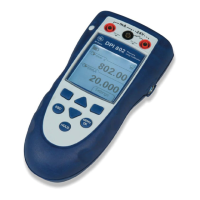What does error 952 mean on GE DINAMAP ProCare 100?
- VVeronica BauerSep 9, 2025
The error code 952 on your GE Measuring Instruments indicates a pneumatic assembly failure.

What does error 952 mean on GE DINAMAP ProCare 100?
The error code 952 on your GE Measuring Instruments indicates a pneumatic assembly failure.
What to do if my GE DINAMAP ProCare 100 displays error E12?
If your GE Measuring Instruments shows error code E12, this indicates that you should charge or replace the battery.
What to do if my GE Measuring Instruments displays error E13?
If your GE Measuring Instruments shows error code E13, this could be due to an external DC source failure or a depleted battery. Charge or replace the battery.
What does error E85 mean on GE DINAMAP ProCare 100?
If the GE Measuring Instruments displays error code E85, ensure correct cuff placement on the patient. A minor leak in the cuff or a pneumatic assembly failure could also be the cause.
What does error E82 mean on GE DINAMAP ProCare 100 Measuring Instruments?
If your GE Measuring Instruments displays error code E82, this could be due to the wrong cuff type or a failed valve on the pneumatics assembly.
What does error E11 mean on GE Measuring Instruments?
If your GE Measuring Instruments displays error code E11, this indicates a printer problem.
What does error E00 mean on GE DINAMAP ProCare 100?
The error code E00 on your GE Measuring Instruments typically appears after changing batteries, which causes user settings and the date/time to revert to default settings.
What does error E10 mean on GE DINAMAP ProCare 100 Measuring Instruments?
If your GE Measuring Instruments displays error code E10, this indicates a printer problem.
What does error 951 mean on GE DINAMAP ProCare 100?
The error code 951 on your GE Measuring Instruments indicates a pneumatic assembly failure.
What does error 940 mean on GE DINAMAP ProCare 100?
The error code 940 on your GE Measuring Instruments indicates an incorrect or failed temperature probe.
| Brand | GE |
|---|---|
| Model | DINAMAP ProCare 100 |
| Category | Measuring Instruments |
| Language | English |
Details crucial safety guidelines, warnings, symbols, and hazard definitions for monitor operation.
Outlines warranty service, extended warranties, customer support contacts, and repair procedures.
Information on ordering replacement parts and proper disposal procedures for the monitor and accessories.
Provides an overview of the monitor's features, parameters, intended use, and available configurations.
Identifies and explains the function of the monitor's front panel controls, indicators, and connectors.
Explains the fundamental principles behind the monitor's BP, SpO2, and temperature measurement systems.
Details on connecting external devices, powering the unit, and battery charging procedures.
Instructions for setting operating modes, date/time, and default parameter configurations.
Information on the rear panel host port, pin assignments, and connection details.
Procedures for routine visual inspection, cleaning, and integrity checks of the monitor.
Steps for testing the Blood Pressure, SpO2, and Temperature parameters with supplied accessories.
Detailed procedures for verifying and calibrating pressure transducers and other system components.
Guide to understanding alarm conditions, error codes, system failures, and their probable sources.
Procedure for accessing, viewing, and printing the monitor's error log history.
Lists compatible parts, accessories, part numbers, and information on how to order them.
Identification of FRUs, their part numbers, and details corresponding to assembly drawings.
Step-by-step instructions for disassembling and reassembling the monitor for component replacement.
Details monitor dimensions, weight, mounting, portability, and power requirements.
Specifications for operating temperature, atmospheric pressure, and blood pressure measurement accuracy.
Accuracy, range, and performance data for SpO2 and temperature monitoring parameters.
Discusses NIBP accuracy validation methods and the limitations of using NIBP simulators.
Explains why NIBP simulators are used for testing, including repeatability and leak detection.
Manufacturer's declarations on electromagnetic emissions and immunity compliance for the ProCare Monitor.
Guidelines for maintaining safe distances from RF communications equipment to prevent interference.
Lists cables, transducers, and accessories that ensure EMC compliance for the monitor.











